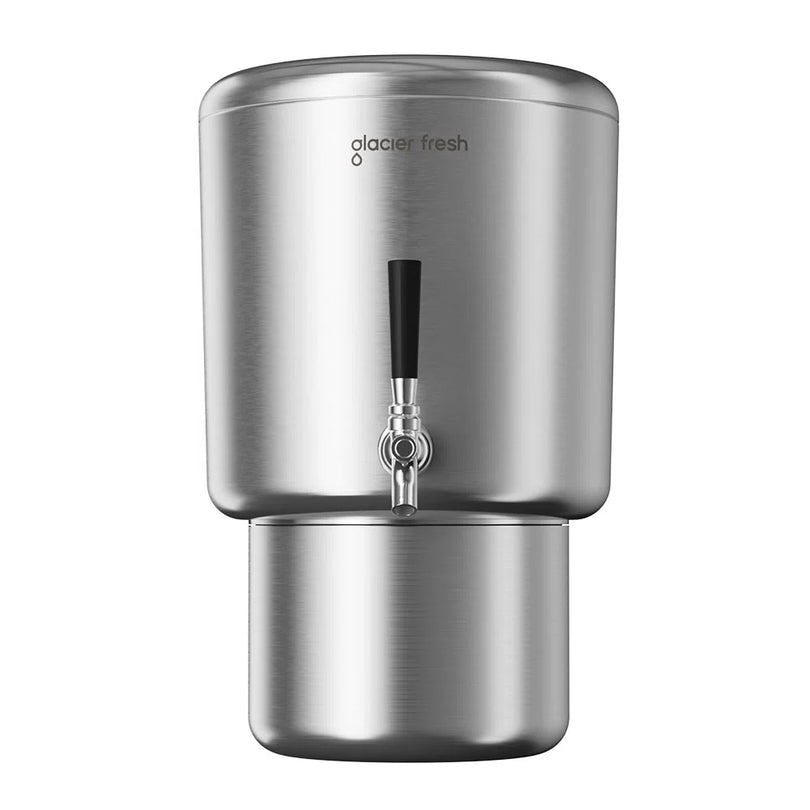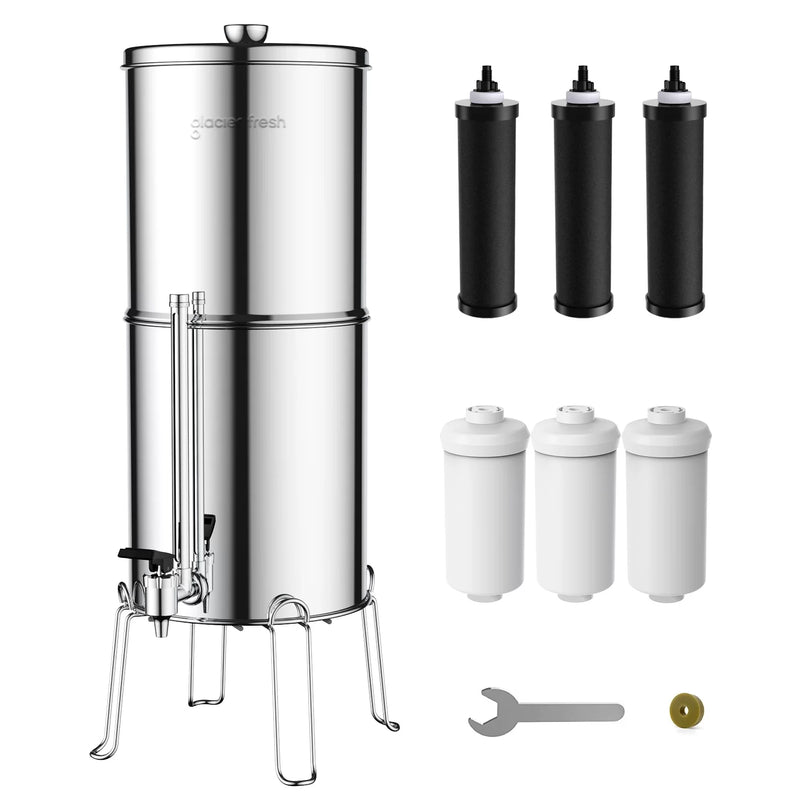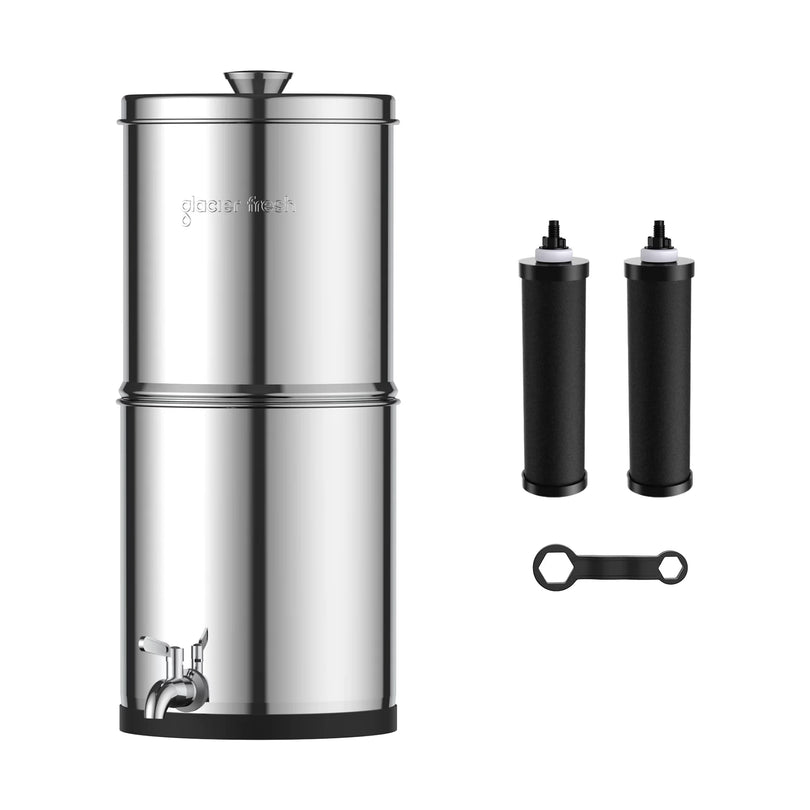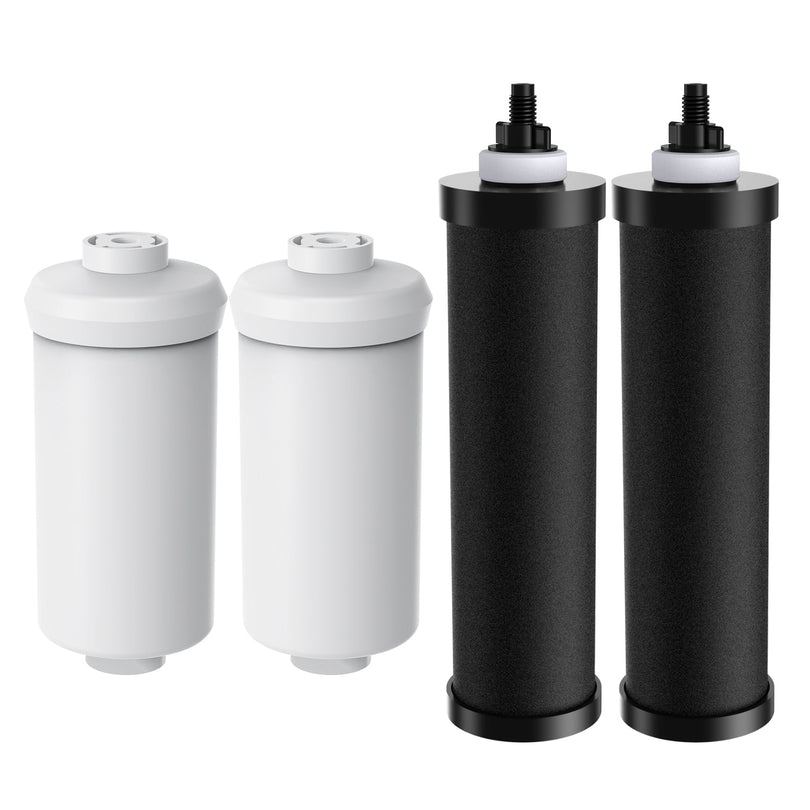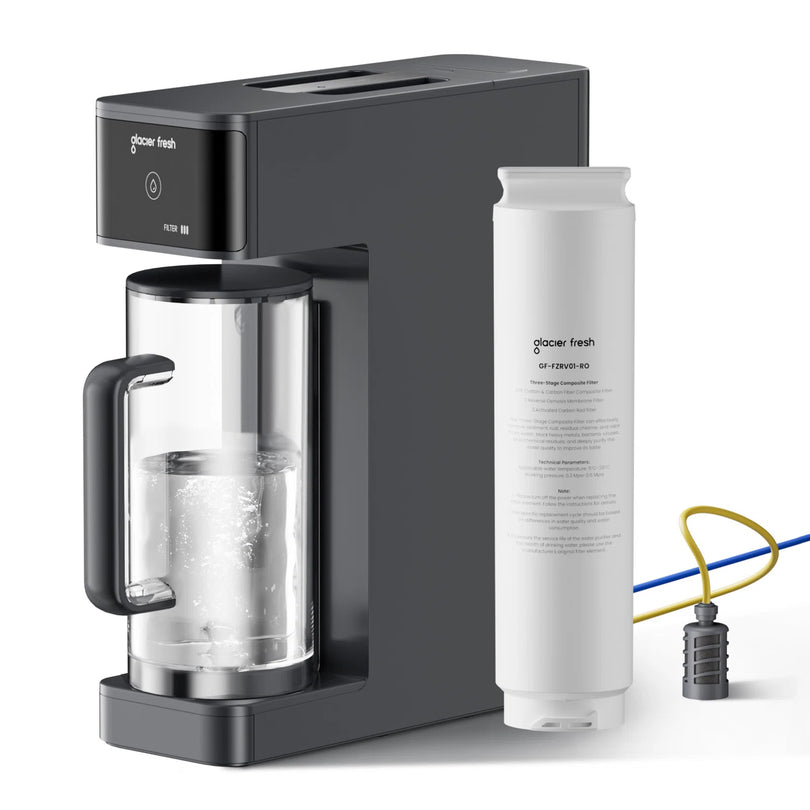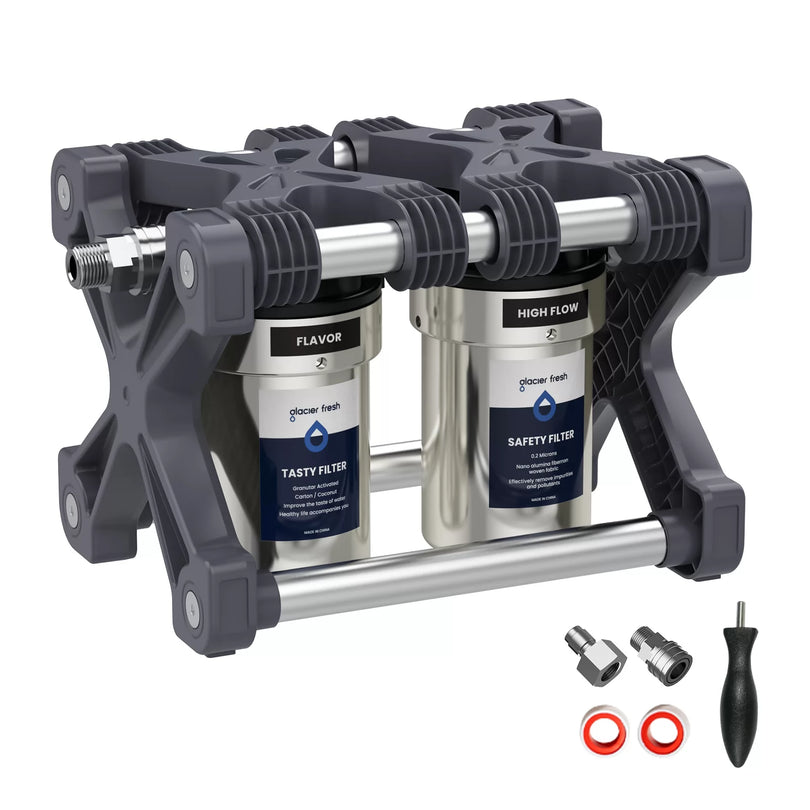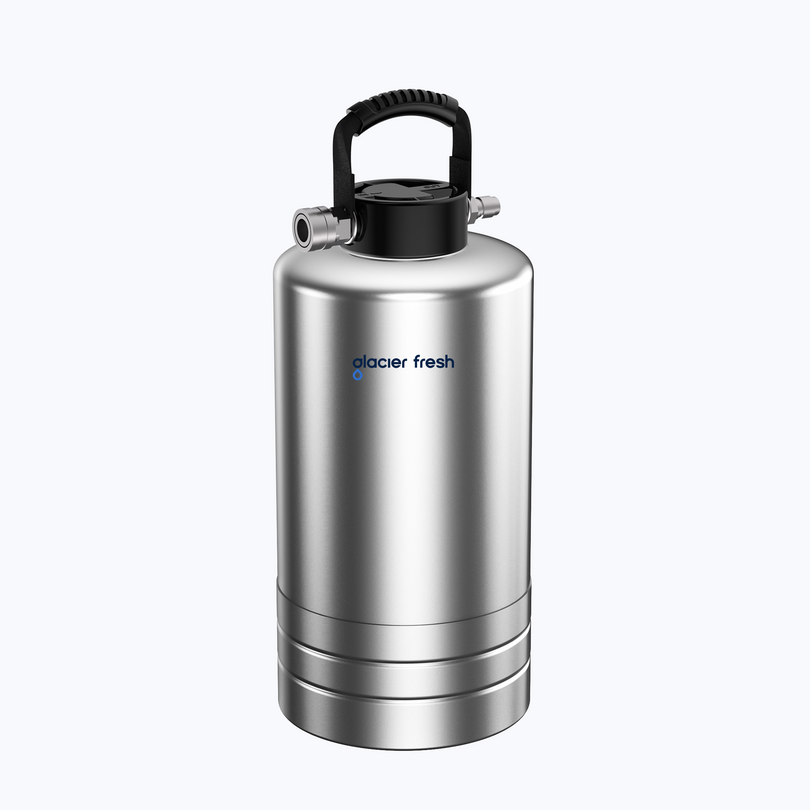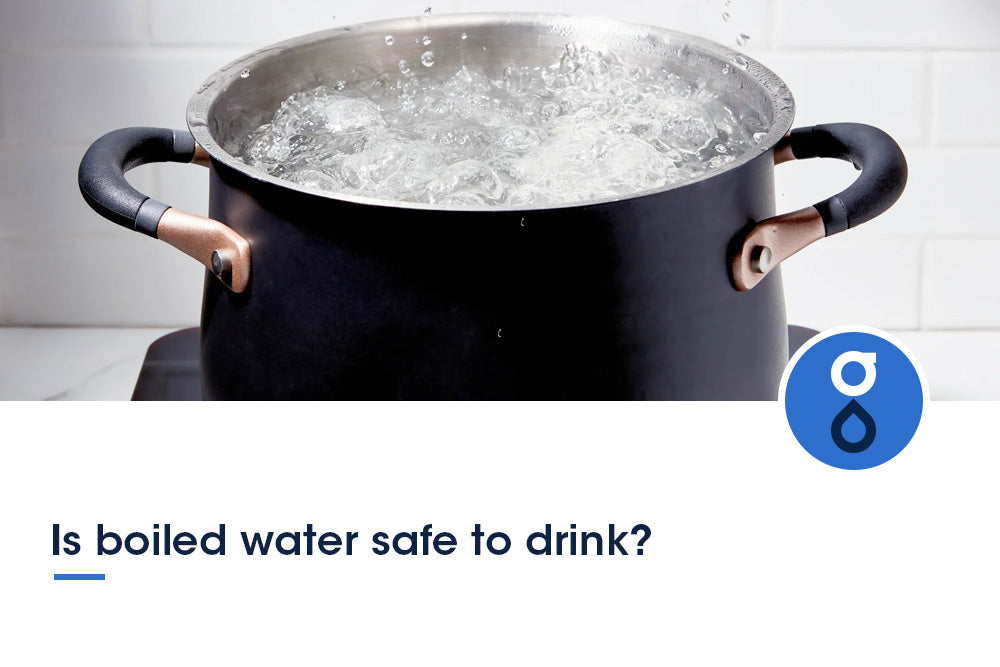Table of Contents:
What`s vinyl chloride?
Other Spilled Chemicals You May Concern
What Is Vinyl Chloride Used For, And How Does It Store?
Where Does The Vinyl Chloride Come From?
What Effects May Vinyl Chloride Cause?
How Do I Know If My Water Has Vinyl Chloride?
Common Ways to Remove Vinyl Chloride From Water
Factors Affecting Vinyl Chloride Removal
A Guideline For Drinking Safe Water In Disasters
FAQs
Conclusion
A massive plume of hazardous materials filled East Palestine, Ohio air on February 3, 2023, as a 38-car-long train derailed. Twenty cars had toxic materials, including Vinyl Chloride, isobutylene, 2-ethylhexyl acrylate, butyl acrylate, benzene residue, and flammable liquids.
In the first five days, the chemical spill killed approximately 3,500 tiny fish across 7.5 miles (12 kilometers) of streams. Similar incidents occur more frequently, causing more danger to human, animal, and plant life.

Therefore, this article mainly explores what Vinyl Chloride is and its dangers, effective ways to deal with it, and how to ensure residents' water safety.
So, how do you remove Vinyl Chloride from water?
The EPA recommends packed tower aeration (PTA) to remove vinyl chloride from water. While effective, PTA is costly. Alternatively, you employ an easier method by using activated carbon filters. Pass the water through the filter. The carbon functions like a sponge by creating a magnetic pull that attracts and traps the impurities. Other methods are reverse osmosis, distillation, and boiling.
What’s Vinyl Chloride?
Vinyl chloride is a volatile substance popular in refrigerants, aerosols, and cosmetics, since its first synthesis in 1835. Other names are chloroethene and vinyl chloride monomer(VCM).
This sweet-smelling organochloride is a flammable colorless gas at room temperature. Though its boiling point is -13.4°C, vinyl chloride dissolves in water slightly. Up to 1.1 g/L of the substance is soluble at 28°C. Vinyl chloride is scentless below 3,900 ppm (10 000 mg/m3). However, some may notice its sweet odor at 200 to 500 mg/m3.
Besides release from the industrial breakdown of chlorinated chemicals, it may form in the environment when soil microbes degrade chlorinated solvents. The poisonous substance can pollute the air and drinking water. It's most common around landfills.
Other Spilled Chemicals You may concern
Isobutylene: This highly flammable gas has a sweet gasoline-like odor. It is used to manufacture aviation gasoline, resins, other chemicals, and antioxidants for food, packaging, and plastics. Exposure to isobutylene can irritate the eyes and throat and cause headaches, fatigue, and lightheadedness, according to the NJDOH. Higher levels of exposure can lead to coma and death.
Ethylhexyl acrylate: Crew members also released and burned this combustible chemical from one of the tank cars. Ethylhexyl acrylate is an ingredient in plastics and paints. It can irritate the eyes, skin, and lungs in humans, while long-term exposure is “acutely toxic” to fish.
Butyl acrylate: Manufacturers use this fruity-smelling liquid to produce paints, plastics, resins, and automotive coatings. According to the EPA, a tank car carrying the substance spilled or caught fire during the derailment. Exposure to butyl acrylate can irritate the eyes, nose, throat, and lungs, according to the New Jersey Department of Health (NJDOH). Symptoms of exposure include dizziness, headaches, nausea, and vomiting. Repeated exposure can cause lung damage.
Benzene residue: Benzene is an organic chemical compound and natural constituent of petroleum.Benzene is classified as a carcinogen, which increases the risk of cancer and other illnesses, and is also a notorious cause of bone marrow failure. Substantial quantities of epidemiologic, clinical, and laboratory data link benzene to aplastic anemia, acute leukemia, bone marrow abnormalities and cardiovascular disease.
Acrolein: Although not mentioned in the EPA letter, scientists from Texas A&M and Carnegie Mellon University discovered high levels of a chemical called acrolein. Acrolein is used to control plants, algae, rodents, and microorganisms. It is a clear liquid at room temperature, and it is toxic. According to the CDC, exposure to acrolein can cause inflammation and irritation of the skin, respiratory tract, and mucous membranes.
What Is Vinyl Chloride Used For, And How Does It Store?
Chloroethene was previously an inhalational anesthetic, like ethyl chloride, but its toxicity led to discontinuation. Today, the chemical is a popular precursor to PVC, and a component of multiple products like;

- Cosmetics
- PVC pipes
- Vinyl flooring
- Cable coatings
- Vehicle upholstery
- Packaging materials
- Plastic kitchen utensils.
Manufacturers store vinyl chloride as a liquid in pressurized cylinders at 1,050 hPa and a temperature of - 10 to -14°C. Vinyl chloride is highly reactive, so it requires careful handling.
The chemical should stay in well-ventilated regions, away from combustible materials and extreme temperatures. Though stable at room temperature, it disintegrates to acetylene and hydrochlorine beyond 400°C.
The approved maximum limit of safety as a health concern is 500 ppm. Vinyl chloride storage containers are frequently high-capacity spheres. One shouldn’t use it in an enclosed space since it’s hazardous when you inhale it.
Where Does The Vinyl Chloride Come From?
The production of vinyl chloride begins with chlorine and ethylene, which are both hydrocarbon byproducts. Chlorine comes from saltwater electrolysis, while ethylene is from petroleum thermal cracking.
These two chemicals combine in a reaction vessel, where high temperature and pressure treatments form vinyl chloride.
Another source of vinyl chloride pollution is leakages and chemical spills, like the case of the Ohio accident.
Moreover, vinyl chloride may form naturally in water bodies after microorganisms break down chlorinated products.
What Effects May Vinyl Chloride Cause?
This carcinogen may lead to various cancers and other health conditions.
Cancer
Long-term exposure may cause liver cancers like hepatic angiosarcoma and hepatocellular carcinoma, leukemia, brain cancers, lung cancers, and lymphoma.
Neurological Effects
Chloroethene may cause neurological problems like a lack of balance and coordination, nerve damage, behavioral and mood changes.
Short-term exposure effects include vertigo, headache, and nausea. Long-term exposure effects include trigeminal sensory neuropathy, sensory-motor polyneuropathy, mild pyramidal signs and cerebellar disorders, and extrapyramidal motor malfunctions.
The chemical is also associated with sleep disorders and sexual dysfunction.
Liver Damage
Vinyl chloride gets metabolized by the liver and can cause cirrhosis, leading to cell death and inflammation. It may also lead to liver failure.

Other Health Effects
Chloroethene can aggravate the respiratory system, resulting in wheezing, coughing, and breathlessness. High exposure may cause developmental issues in offspring and interfere with reproductive health.
How Do I Know If My Water Has Vinyl Chloride?
Cheap DIY test kits won't help establish the presence or absence of vinyl chloride in your water. You can get a dedicated field test kit, send your samples to a lab, or use electronic sensors to determine chloroethene’s presence.
Laboratory Analysis
This testing method is the most accurate. Based on CDC recommendations, I send my water samples yearly to a government lab. However, you can seek an analysis whenever you suspect water pollution. Find a certified lab that tests for VOCs, including vinyl chloride, or one that specifically tests for vinyl chloride.
The cost varies depending on the number of elements under testing, the lab, and the locality. The average ranges are between $60 and $250.
The lab assesses the model using methods like mass spectrometry, gas chromatography. It takes about two weeks to receive results. Aim for a lab that provides the exact contamination levels and health implications at the toxicity degree identified.
Field Test Kits
Portable testing kits are available for screening water samples instantly. They often use colorimetric techniques, like adding a reagent to a water sample and comparing the color change against an included determining guide.
I have used test kits costing $80 or less. However, portable kits are typically less responsive and precise than laboratory analyses.
Electronic Sensors
These sensors evaluate changes in the water's electrical conductivity or other characteristics denoting vinyl chloride presence. While they can be helpful for testing, they aren't as reliable as lab analysis.
Common Ways to Remove Vinyl Chloride From Water
Now that you know the basics of vinyl chloride removal, what option should you choose? Let’s find out more about the different methods.
Activated Carbon Filters
A popular method to remove chloroethene from water is using activated carbon filters. The filters are filled with activated carbon/charcoal granules, which form tiny pores that trap pollutants.

When you pump water through the filter, the carbon attracts chloride and physically sticks it to its surface, leaving the clean water to exit. The absorption process is easy as carbon is much stronger compared to the attracting forces that try to keep chloroethene in water. These filters feature high microporosity, with one gram of the substance having a 3,000㎡ internal surface area. Their extensive surface area guarantees excellent vinyl chloride extraction. Studies show that combining activated carbon filtration with aeration boosts the effectiveness of eliminating volatile organic compounds.
Activated carbon filters are the most popular options since they’re straightforward and inexpensive. The method is cheaper than the pricey reverse osmosis and distillation methods. You need around $35-50 for a carbon filter with superb vinyl chloride removal properties. Ensure to maintain and replace your filters as recommended for effectiveness.
Reverse Osmosis (RO)
I’ve found the Reverse Osmosis method effective against vinyl chloride and other crap lurking in my water. You can eliminate between 95-99% of contaminants through this process. According to a 2017 study, RO eliminates chlorides, alkalinity, sulfates, and color with an over 95% efficiency.
RO is a process that separates water molecules from suspended solids such as salt by forcing water through a semi-permeable membrane.
The process commences with water pressurization, forcing the water molecules through the membrane. The barrier filters larger molecules, such as chloride salts, while smaller water molecules pass through. The filtered water collects in a separate container. The container with impurities is the reject stream, which you'll discharge as wastewater.
Though you can make a DIY reverse osmosis system, purchasing a ready-to-use option is better for simplicity and accuracy. An RO system for your whole house can cost between $750-7,500. If you need one for your kitchen, you’ll spend about $150-1500.
Distillation
Though costly and energy-intensive, distillation is an excellent technique for removing many contaminants from water. It’s effective because water has a lesser boiling point than most contaminants.
Upon boiling the contaminated water, it evaporates, leaving behind the pollutants. Water vapor condenses as it rises and accumulates in another container. The process repeats until all the water clears, leaving behind solid residues.
While vinyl chloride evaporates, it doesn't dissolve back into the water very well. Still, some of it gets back, and you can deal with that using a GAC filter.
Most home water distillers range between $70-300, though you can get units of up to $1,800.
Boiling
Heating water works using the same principle as distillation. The only difference is the degree of contaminant removal. Boiling eliminates or inactivates most pathogens.
However, unlike distillation, it won’t remove residues and salts that don’t evaporate. Besides, boiling is unsuitable for VOC elimination as it leads to air exposure, increasing the likelihood of inhalation.
You can use GAC filters alongside water boiling to improve the effectiveness of the two methods of removing vinyl chloride.
Comparison of the Different Methods of Removing Vinyl Chloride from Water
Here’s a summary table of how these methods compare.

Factors Affecting Vinyl Chloride Removal
How well you can get rid of chloroethene depends on the water temperature, pH, and concentration levels.
Vinyl Chloride Concentration Levels
Vinyl Chloride Concentration Levels primarily affect activated carbon filters that work by trapping the chemical. As the concentration of vinyl chloride in the water increases, it becomes more challenging for the filter to purify the water, as most pores clog.
Eventually, the pores saturate, and the filter loses its ability to adsorb more vinyl chloride, requiring replacement.
Water pH
Based on the water pH, chloroethene can exist in various forms, each with its chemical attributes and reactivity. It's a relatively unreactive, neutral molecule in pH 7 (neutral) water, making decontamination challenging.
However, it switches to its anionic form in alkaline conditions (higher pH), improving its reactivity to certain chemicals.
Water Temperature
Vinyl Chloride is quite stable, away from sunlight and high oxygen. When exposed to higher temperatures, its reactivity increases, making it more unstable and easier to remove from the water.
A Guideline For Drinking Safe Water In Disasters

Access to safe drinking water is critical during a disaster. Here are some guidelines to ensure your safety if natural sources get contaminated.
- Bottled water: If viable, use properly sealed commercial bottled water. Look for water disinfected with chlorine or other chemicals.
- Use a water filter: Get one with a 0.1-micron pore size or smaller to ensure effectiveness against most contaminants.
- Avoid untreated water: Avoid streams, lakes, and other untreated water sources, unless you lack alternatives. Besides pollution, open water sources may harbor harmful microorganisms.
- Regularly clean hands with soap. Use alcohol-infused sanitizers if you lack clean water.
- Watch out for water-related sicknesses: Get medical help if experiencing gastrointestinal problems, fever, and other water-related conditions.
- Follow governmental or tribal health departments regarding policies and recommendations for water boiling and treatment based on your locality.
FAQs
How Do You Prevent Vinyl Chloride Exposure?
Though a significant hazard, water is not the primary means of vinyl chloride exposure. You’re likely to encounter this carcinogen through
- Cigarette smoke
- PVC food packaging, and plastic containers
- Working in industries that deal with vinyl chloride or products that contain it
So, the best course of action is avoiding tobacco smoke, reducing the usage of PVC products, and wearing protective masks in exposed areas.
Does Vinyl Chloride Dissolve in Water?
Though its boiling point is -13.4°C, vinyl chloride dissolves in water slightly. Up to 1.1 g/L of the substance is soluble at 28°C.
Conclusion
The dangers of Vinyl Chloride are extreme and require quick action to safeguard water. Although many methods are available for removing Vinyl chloride from water, not all are effective.
I’ve successfully used the activated carbon filter from Glacier Fresh to remove chemicals from my water, and I highly recommend it. This method is affordable and straightforward for purifying water and removing odor. Other ways, like reverse osmosis, distillation, and boiling, are still effective, but I found them either pricier or time-consuming.





